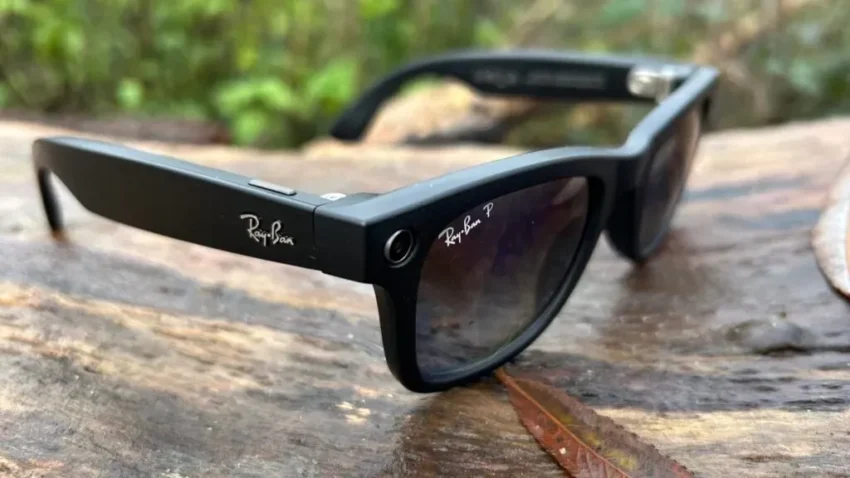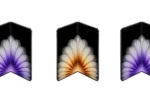Meta wearables are set to redefine the landscape of wearable technology, making waves in 2025 with the launch of six new AI-powered devices. Following the tremendous success of Meta smart glasses, which sold over a million units in 2024, the anticipation for new innovations continues to grow. The company’s recent memo hints at an exciting future, where Ray-Ban glasses might evolve to include advanced features like built-in displays, catering to tech-savvy consumers. As Meta Connect approaches, eyes are on the potential of these wearables to enhance daily life and work seamlessly with existing technology. With competitors like Google and Apple also investing heavily in AI wearables, Meta is poised to lead the charge in a rapidly evolving market.
In the world of personal technology, devices that can be worn on the body, known as wearables, are gaining significant attention. Meta’s upcoming line of products promises to incorporate cutting-edge artificial intelligence, positioning the company at the forefront of innovation. These wearable gadgets, such as smart glasses and augmented reality eyewear, not only enhance user experience but also integrate seamlessly into everyday activities. With the anticipated release of new models, including advanced Ray-Ban styles, the future of connected wearables looks bright. As major tech players like Apple and Google enter this space, the competition is set to foster even more groundbreaking advancements in wearable tech.
The Rise of Meta Wearables: A New Era in Technology
Meta is on the brink of revolutionizing the wearable technology landscape with its ambitious plans for 2025. According to a leaked memo from Meta’s CTO, the company is set to launch six new AI wearables, following the success of its previous smart glasses. This strategic move indicates that Meta is not just aiming to maintain its market presence but is actively seeking to expand and innovate. As the demand for AI wearables continues to surge, Meta is poised to capitalize on this trend, positioning itself as a leader in the wearable technology sector.
The company’s commitment to advancing wearable technology is evident in its collaboration with iconic brands like Ray-Ban, which has already resulted in substantial sales. With over 1 million units sold in 2024, Meta has demonstrated that there is a substantial market for smart glasses that blend functionality with style. As we look ahead, the anticipated launch of new products, including AR glasses for athletes and enhanced versions of the Ray-Ban Meta glasses, suggests that Meta is not only responding to current consumer needs but is also setting the stage for future innovations.
AI Wearables: Transforming Everyday Experiences
AI wearables are increasingly becoming integral to our daily lives, offering a seamless blend of technology and convenience. These devices are designed to enhance user experiences by integrating advanced features such as augmented reality and real-time data processing. With the upcoming launch of Meta’s AI wearables, users can expect enhanced functionalities that will redefine how we interact with technology. This shift towards AI-driven wearables signifies a major transformation, making everyday tasks more efficient and enjoyable.
As competitors like Google and Apple also dive into the AI wearable market, the landscape is becoming more competitive. Meta’s focus on innovative designs, such as the rumored Oakley-styled AR glasses, highlights the company’s commitment to catering to diverse consumer preferences. By leveraging cutting-edge technology, these wearables are not just gadgets; they represent a lifestyle upgrade for users seeking to integrate smart solutions into their routines.
Meta Smart Glasses: A Game Changer in Wearable Tech
The introduction of Meta smart glasses has marked a significant milestone in the evolution of wearable technology. These glasses are not just about style; they incorporate advanced features that enhance user experience through augmented reality. The integration of AI capabilities allows users to access information on-the-go, making them an essential tool for both personal and professional use. The success of the original model has paved the way for further innovations, with the next generation expected to offer even more advanced functionalities.
As we anticipate the release of new Meta smart glasses, speculation is rife about the features they will include. Reports suggest that these glasses may come with built-in displays, providing users with an immersive experience. This enhancement could redefine how we perceive wearable technology, making it more interactive and integrated into our daily lives. With Meta leading the charge in this sector, the future of smart glasses looks promising, potentially setting new standards for what consumers can expect from wearable devices.
The Competitive Landscape of Wearable Technology
The wearable technology market is rapidly expanding, with major players like Meta, Google, and Apple racing to capture consumer attention. Each company is investing heavily in the development of AI-powered devices that promise to enhance user interaction and engagement. Meta’s strategic focus on releasing multiple wearables in one year could significantly impact its market share, as it aims to leverage its existing customer base while attracting new users.
Competition in this space is fierce, and success will depend on how well these companies can innovate and meet consumer demands. Meta’s plans for a diverse range of products, including smart glasses and fitness-focused wearables, showcase its commitment to staying ahead of the curve. As the market continues to evolve, the ability to offer unique features and seamless integration with existing technologies will be crucial for any company looking to thrive in the wearable technology arena.
Ray-Ban Glasses: Merging Fashion with Technology
Ray-Ban glasses have long been synonymous with style, and Meta’s collaboration with the iconic brand has successfully merged fashion with cutting-edge technology. The result is a product that not only enhances visual appeal but also offers advanced functionalities that cater to modern users. The popularity of these smart glasses highlights a growing trend where consumers seek wearable technology that reflects their personal style while providing practical benefits.
Looking ahead, the anticipated new Ray-Ban Meta glasses are expected to take this fusion of fashion and technology to the next level. With features like built-in displays and augmented reality capabilities, these glasses will appeal to a broad audience, from tech enthusiasts to fashion-conscious consumers. By continuing to innovate in this space, Meta is set to redefine what we expect from smart eyewear, further establishing its brand as a leader in wearable technology.
Meta Connect: Showcasing Future Innovations
Meta Connect has become a pivotal event for unveiling the company’s latest advancements in technology, particularly in the realm of wearable devices. During the recent conference, Meta showcased Project Orion, highlighting its commitment to developing innovative solutions that push the boundaries of what wearables can achieve. This platform serves as a crucial touchpoint for enthusiasts and industry professionals to glimpse the future of wearable technology.
The insights shared during Meta Connect not only emphasize the company’s strategic vision but also its dedication to integrating AI into its products. As Meta continues to reveal its plans for the upcoming AI wearables, the excitement surrounding these innovations grows. By fostering a community of developers and tech enthusiasts, Meta Connect plays an essential role in shaping the narrative of wearable technology and its potential impact on everyday life.
The Future of Wearable Technology: What’s Next?
As the wearable technology landscape evolves, the future holds exciting possibilities for consumers and developers alike. With Meta’s commitment to launching six new AI wearables in 2025, we can expect a wave of innovations that will enhance how we interact with technology. This upcoming release is not just about more devices; it represents a strategic shift towards creating a more integrated and intelligent ecosystem of wearables that cater to various needs.
Moreover, as AI capabilities become increasingly sophisticated, wearable devices will likely offer more personalized experiences. From health monitoring to augmented reality applications, the potential for these technologies is vast. As Meta and its competitors continue to push the envelope, the future of wearable technology promises to be dynamic, engaging, and transformative for users around the globe.
The Importance of User Experience in Wearable Design
User experience (UX) is paramount in the design of wearable technology, particularly as companies like Meta strive to enhance engagement and retention. The success of any wearable device hinges on its usability and the value it provides to consumers. By focusing on intuitive design and seamless integration with daily activities, Meta can ensure that its upcoming AI wearables meet the expectations of an increasingly tech-savvy audience.
Moreover, incorporating feedback from early adopters can play a crucial role in refining these devices. Understanding user behavior and preferences allows companies to iterate and innovate, leading to improved products that resonate with consumers. As Meta prepares to launch its new wearables, prioritizing user experience will be key to establishing a loyal customer base in the competitive wearable market.
Innovations in Augmented Reality: Meta’s Vision
Augmented reality (AR) is at the forefront of wearable technology, and Meta is positioning itself as a leader in this field. The company’s focus on developing AR solutions, including the anticipated Ray-Ban smart glasses with built-in displays, highlights its commitment to creating immersive experiences for users. By integrating AR into everyday wearables, Meta aims to transform how individuals perceive and interact with the world around them.
As AR technology continues to evolve, the potential applications for these wearables are vast, ranging from gaming to professional training. Meta’s vision for the future includes not only enhancing entertainment experiences but also providing practical solutions for various industries. With its innovative approach to AR, Meta is set to redefine the boundaries of wearable technology, paving the way for a new era of interactive devices.
Frequently Asked Questions
What are Meta wearables and how do they integrate AI technology?
Meta wearables refer to a range of devices developed by Meta, including smart glasses and other wearable technology that incorporate AI capabilities. These devices, such as the Ray-Ban smart glasses, are designed to enhance user experience by integrating features like augmented reality and smart notifications, making them a key player in the wearable technology market.
When will the new Meta smart glasses be released?
Meta plans to launch six new AI wearables, including an updated version of their smart glasses, in 2025. This follows the successful release of the original Ray-Ban smart glasses, which sold over 1 million units in 2024.
What features can we expect from the upcoming Ray-Ban Meta glasses?
The upcoming Ray-Ban Meta glasses are expected to include a built-in display and enhanced augmented reality features. These advancements aim to provide a more immersive experience for users, aligning with Meta’s vision for wearable technology.
How does the success of Meta wearables impact its future products?
The success of Meta wearables, particularly the Ray-Ban smart glasses, has encouraged the company to expand its product line. With plans to launch six additional AI wearables in 2025, Meta aims to leverage its current success to drive further innovation in the wearable technology sector.
What is Project Orion in relation to Meta wearables?
Project Orion is an initiative by Meta aimed at developing advanced wearable technology, showcased during the Meta Connect conference. It represents Meta’s commitment to pushing boundaries in the field of AI wearables and augmented reality.
How do Meta wearables compare to competitors like Google and Apple?
Meta wearables, particularly the Ray-Ban smart glasses, currently have a competitive edge in the market, as highlighted by their successful sales. While Google and Apple are also developing their own AI-powered wearables, Meta’s early market entry and innovative features position it as a leader in wearable technology.
What role will wearable technology play in Meta’s long-term strategy?
Wearable technology is integral to Meta’s long-term strategy, as emphasized in a leaked memo from CTO Andrew Bosworth. The company aims to enhance user engagement and retention through its innovative AI wearables, particularly in mixed reality applications.
Are there any rumors about new styles or designs for Meta wearables?
Yes, there are reports suggesting that Meta is exploring new styles for its wearables, including Oakley-styled AR glasses codenamed Hypernova. This indicates Meta’s focus on catering to various user demographics and use cases.
What can users expect from Meta Connect regarding wearables?
At the Meta Connect conference, users can expect announcements about new features and products related to Meta wearables, including updates on ongoing projects like Project Orion and insights into the upcoming AI wearables slated for release in 2025.
How can I stay updated on Meta wearables news and releases?
To stay informed about the latest news and releases related to Meta wearables, you can follow Meta’s official channels, subscribe to technology news outlets, or participate in events like Meta Connect where they share updates on their innovative products.
| Key Point | Details |
|---|---|
| Meta’s Expansion in Wearables | Meta plans to launch six new AI wearables in 2025, following the success of its smart glasses. |
| Success of Smart Glasses | Over 1 million units of Meta’s smart glasses were sold in 2024, marking a significant achievement for the company. |
| Leaked Memo Insights | A memo from CTO Andrew Bosworth highlights the company’s intention to dominate the wearables market with new products and features in 2025. |
| Record Launch Plans | If successful, launching six wearables in one year would be a record for Meta, though plans may evolve. |
| Potential New Products | Expected launches include new Ray-Ban glasses with built-in displays and Oakley-style AR glasses for athletes. |
| Competitive Landscape | Meta is currently ahead in the AI wearables race, with competitors like Google, Apple, and Samsung also developing similar products. |
Summary
Meta wearables are set to transform the landscape of wearable technology in 2025 with the introduction of six new AI-powered devices. Following a successful year with their smart glasses, which sold over a million units, Meta is positioning itself as a leader in the wearables market. The leaked memo from CTO Andrew Bosworth indicates a strong commitment to innovation and competitiveness within the industry. As the first company to launch such a diverse range of products, Meta wearables are poised to enhance user experience and engagement significantly. With the anticipated new features and designs, the future looks bright for Meta’s continued expansion in the wearables sector.






